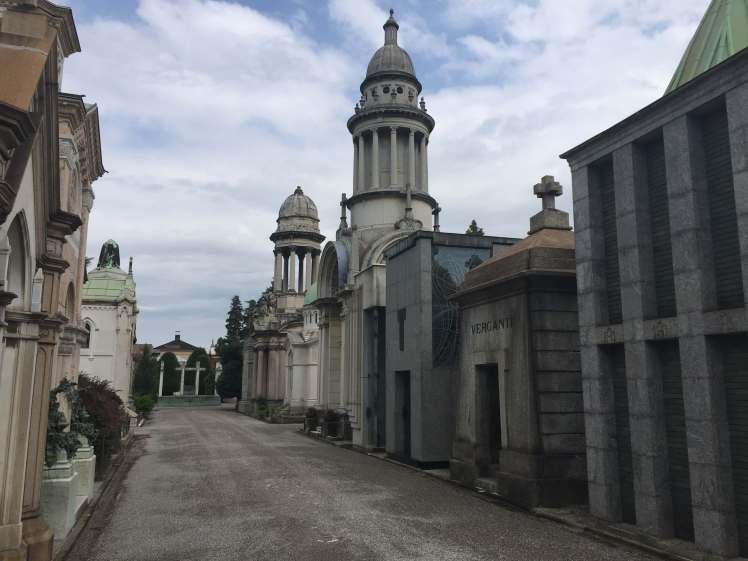Between leaving Sweden and arriving in France to begin my French course, I made a few stops in Italy. The first of these stops was a day in Milan, Italy’s second-largest city.
Sitting on a plain at the foot of the Alps in the region of Lombardy, Milan is Italy’s business and economic capital, and epitomizes the hard-working reputation of northern Italy. Indeed, one of the first things I noticed when riding in from the airport was the skyline.
In contrast to Rome, where St. Peter’s Basilica and hundreds of church towers dominate the cityscape, Milan is a modern city of glass offices and shining skyscrapers such as the stiletto spire of the Unicredit Tower. Streets lined with high-end shopping and the luxury Galleria Vittorio Emanuele II testify to the city’s importance in the fashion industry.


This is not to say, however, that Milan is without its own quintessential Italian architecture and culture. Ancient Roman ruins, monuments, and numerous historic churches mingle with the modern. Standing in the center of the city is the Duomo di Milano, Milan’s cathedral and one of the largest Gothic churches in the world. The cathedral’s wide, bright white facade dominates the square, while several tiers of flying buttresses and thick columns support high vaulted ceilings and impossibly vast fields of stained glass. I also took some time to have a look inside the Duomo Museum, which displays the cathedral’s large collection of religious sculpture, paintings, and liturgical objects, as well as old architectural details of the building that have been replaced.

Another interesting place in Milan is the Cimitero Monumentale. This cemetery was created about a century before Skogskyrkogården in Stockholm, and for a similar reason – to relieve stress on the inner-city cemeteries. However, whereas Skogskyrkogården was innovative for its use of the natural landscape in the design, Cimitero Monumentale is remarkable for its grand and ostentatious design typical of nineteenth-century Italy.
A building akin to a palace or castle serves as the monumental entrance onto a master-planned network of alleys leading between rows of elaborate grave markers and mausoleums owned by Milanese families. This design makes the cemetery feel more like a city of the dead than a peaceful resting place, and I could have easily spent several hours looking at the creative and varied architecture that is on display. But, I only had a few hours left to discover the rest of the living city outside, so I passed back through the monumental entrance and continued on my way.


My next stop was the Sforza Castle, which stands at the head of a wide boulevard leading toward the Duomo square. Built by the noble Sforza family and designed in part by Leonardo da Vinci, the castle was incorporated directly into the Medieval city wall and formed a defensible entrance to the city complete with drawbridges and a moat. Over the centuries, the castle variously served as a private residence, a seat of government, and a military fort before finally being converted into a museum. While I would have liked to visit the collections housed in the castle, the precise masonry of the outer walls and the artistic details of the inner courtyards provided plenty of scenery to marvel at when pressed for time.

In the evening, I made my way over to the Navigli district. Via a series of canals and locks, Milan is connected to the Po River and by extension to the Adriatic Sea on the other side of the country. The canals served as an important transportation link during the nineteenth century, and connected to an extensive network of urban canals that once wound throughout the city.
The canals are no longer commercially useful, but the two remaining canals, Naviglio Grande and Naviglio Pavese, are lined with restaurants and bars. This makes them a pleasant evening hangout and a fun place to people-watch while enjoying a heaping plate of pasta. At the intersection of the two canals, a wide basin forms the focal point of a plaza buzzing with after-work conversation over cocktails taken “to-go” from nearby bars.

One day is not much time to visit a city, especially one as large as Milan. However, as I watch the sun set over the Navigli canal basin, I feel that I have gotten a good taste of the city. At least, enough of a taste to appreciate the differences between Milan and my next stop in Italy: the Eternal City, Rome.

One thought on “24 Hours in Milan”